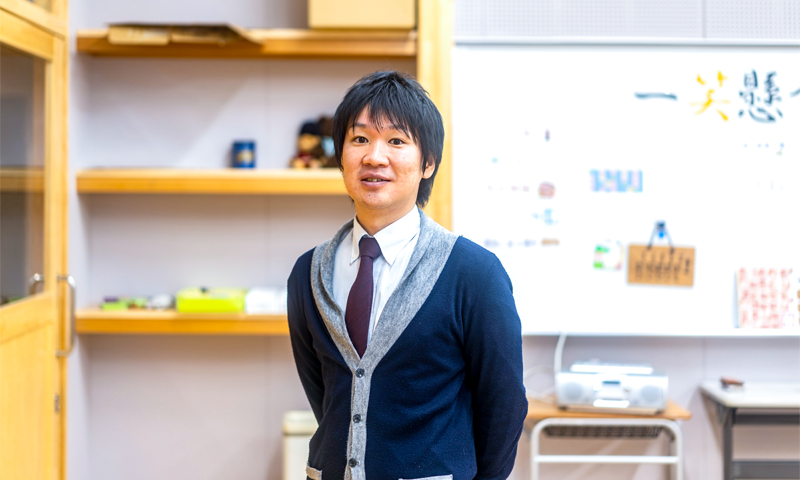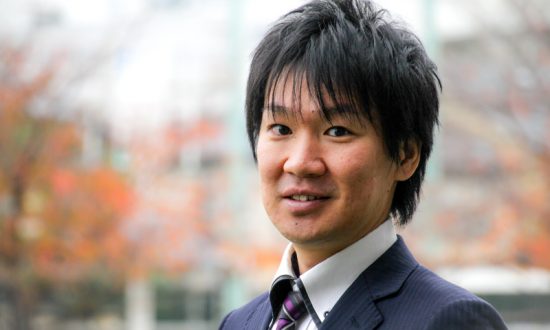An award-winning educator, Hidekazu Shoto works at Ritsumeikan Primary School, Kyoto, Japan. His teachings have been recognized with a Minecraft Education Award from Microsoft, a Microsoft Innovative Educator Expert certification, and the best-practice award twice from Ritsumeikan Academy in 2011 and 2017. Author of 4 books, Hidekazu was nominated as one of the Global Teacher Prize 2019 Top 10 finalists for his innovative & outstanding contribution to education.
Japan’s IT-based education is said to lag far behind the world’s standards. It is said that traditional teaching methods are utilized in almost all classes and that the style has not changed in about 120 years. PCs and smartphones are not allowed in the classroom, and the experience of connecting to the world from the classroom via the Internet is something most students do not have. Japan is an economically fortunate country, and almost every household has a PC and Internet environment. However, in schools, the environment is not yet ready, and some schools have multiple teachers using a single PC.
I believe that one of the reasons for the lack of IT-enabled education in Japanese schools is that they are “too busy”. The level of education of Japanese teachers is remarkably high and most children are calm and obedient learners. However, the teachers are busy. There is a lot of overtime work, and teacher overtime has become a social issue in Japan. In such a busy situation, they cannot afford to introduce new IT into their schools. And the fact that Japan’s IT education is lagging behind has never been a major issue in its history as it is now.
COVID-19 came at the same time as one grade change. Due to the pandemic, many schools have been closed since March. This is an unprecedented situation in the history of Japanese education. The Japanese education system has been programmed to start in April. The first thing we thought of was the “guarantee of learning”. How do we provide opportunities for learning in a situation where people cannot come to school?
Many schools sent out handouts and other materials by mail and instructed them to do homework. However, the period of school closure was longer than we had imagined, and many of the students said that they were not comfortable with “print learning” alone. Handouts alone did not motivate children to learn, and many families worried about the quality of learning. Ritsumeikan Primary School has been in discussions since the end of March and has switched to distance learning since April, using Zoom to communicate with the children every morning and YouTube to allow them to view the lessons anytime, anywhere, over and over again, and Microsoft Teams to allow for daily communication. There are several schools in Japan that are using this type of online learning support. However, some data show that it is less than 10 percent.
Japan’s government has come up with a plan to prepare one tablet for each student. Despite taking time, many schools, by the end of May, began to embrace distance learning. We looked at each family’s PC retention rate and whether or not they had Wi-Fi in the house, and gradually began to incorporate distance learning. Through trial and error, the teachers are also distributing videos of their classes and conducting remote classes. There are a lot of difficulties, but the “introduction of IT education”, which had not progressed at all in the history of the country, has been greatly advanced by COVID-19. Japan’s education was in a situation where it had no choice but change.

In Japan, the damage caused by Covid-19 is slowly diminishing, and the state of emergency was lifted at the end of May. The school holidays ended, and schools were slowly reopening. Although it was nice to see students coming to school, we should not let our guard down. With the prediction of a second wave of Covid-19, it was important for Japan as a whole to ensure that children’s learning does not stop when schools are closed again through remote learning and other methods.
Thanks to the government’s cooperation, the PC and Internet environment are gradually improving. We, the teachers, are slowly building up our know-how, so there will not be as much chaos as there was in March. This experience, in my opinion, is going to be a huge one.
The impact of Covid-19 has led to the evolution of IT education in Japan. What this has made us realize is that video classes such as YouTube are sufficient if they are just for imparting knowledge. There is no reason to bother taking the time to come to school. In light of this, we must consider what it means to come to a place called school to learn. School is not just a place to give/receive knowledge. In the era of Post Covid-19, the very nature of schooling, including the meaning of learning with friends and the importance of experiencing, must change.
In Japan, there are children who do not come to school, which is called “truancy”. They are unable to adjust to the school environment and are missing out on learning opportunities. As IT education in Japan evolves, it should be possible to provide learning opportunities for children in these environments. This evolution is valuable and will lead to the guarantee of learning opportunities for every child.
Learning in school can also be exploratory, collaborative, or experiential. This is because the “knowledge-giving education” of Japanese education has proven that it is possible to do without coming to school. I believe that this will be a chance to fundamentally change the way we teach in Japan. The learning that comes with knowledge can be done at home, and based on that knowledge, new and creative learning can be done with classmates in the classroom. All over Japan, flipped learning may become possible.
Post Covid-19, Japan’s education has a chance to change the learning environment. However, the most important thing remains at the end. It is an update of the teacher’s mindset. It is actually difficult to change the mindset of teachers. This is because, as noted above, teachers are “busy”. Until now, IT skills were not required of schoolteachers at all. That is why there are so many teachers in Japan who are not good at IT. It is unreasonable to ask busy teachers to become proficient in IT. Over time, we need to improve the IT skills of teachers while seeking their understanding of the new era of education. Also, college students who are going to become teachers need to learn new teaching skills and jump into the school world. I am convinced that in these times when we cannot predict what kind of disaster will happen, what teachers need to be able to do is to be able to respond flexibly.
The times are changing so fast, who could have predicted such a thing as Covid-19? In Japan, the Great East Japan Earthquake of 2011, a major natural disaster, also disrupted education at that time. At that time, we didn’t yet have the option of “distance learning. But now it is different. We have a new weapon in our hands: IT. We learned in 2011 that no matter what the circumstances, it is important not to stop children from learning.
Japan’s IT-based education is said to lag far behind the world’s standards. When the Post-Covid-19 era arrives, Japanese education will change dramatically, and a new era of education will come. I would like to continue to play the role of a leader in leading IT education in Japan, so that I can offer many pieces of advice at that time.




